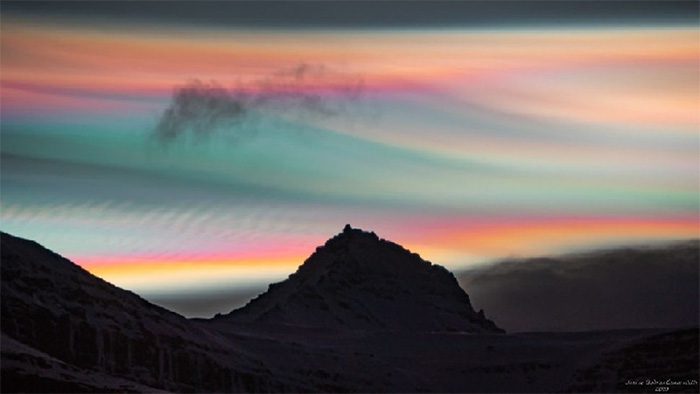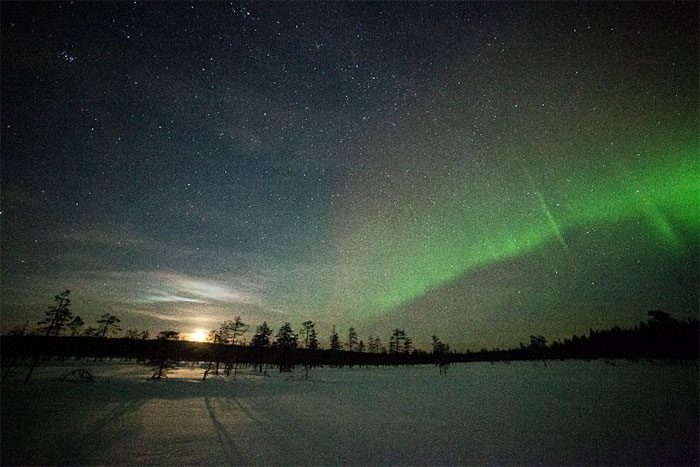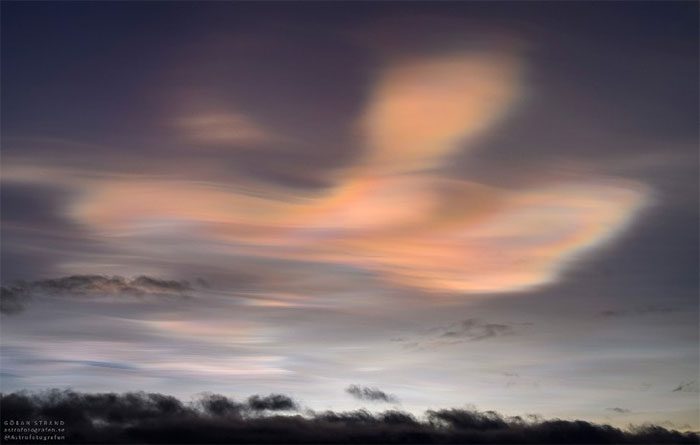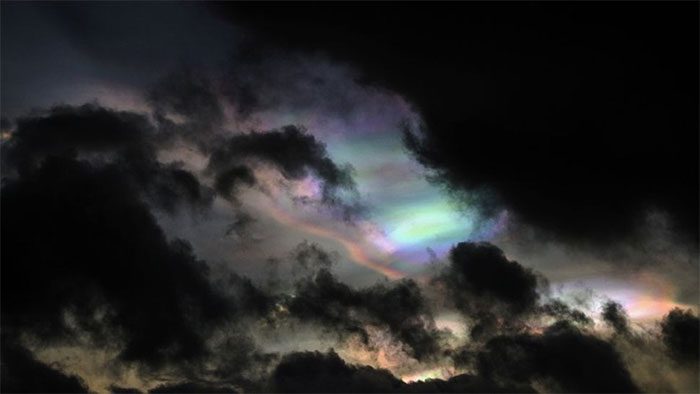The dark sky over the Arctic Circle has recently been illuminated with vibrant colors, but this phenomenon is not caused by the aurora borealis. Instead, the shimmering rainbow is created by tiny ice crystal clouds floating in the atmosphere at a higher altitude than usual.

Colorful clouds shining in the night sky above Jökultindur mountain in Iceland on January 25. (Photo: Jónína Guðrún Óskarsdóttir).

Stratospheric clouds in the polar region photographed in Finland on January 26. (Photo: Finn Snaterse).
According to reports from Spaceweather.com, these clouds, known as polar stratospheric clouds (PSC), only form when the lower stratosphere reaches temperatures below -81 degrees Celsius. Typically, clouds do not form in the stratosphere due to its dryness, but at these extremely low temperatures, “water molecules begin to bond together into tiny ice crystals”, resulting in cloud formation. This means that PSC can form much higher than typical clouds, at altitudes ranging from 15 to 25 kilometers above the ground.
When sunlight passes through these crystalline clouds, it scatters, creating various wavelengths of light, which has led to the phenomenon PSC being referred to as an “iridescent cloud.” Due to the high altitude of these clouds, sunlight can illuminate the crystals and scatter above the observer even when the sun is below the horizon, making these clouds appear brightest.

Stratospheric clouds on January 26 in Östersund, Sweden. (Photo: Göran Strand).
According to Spaceweather.com, on January 25, severe freezing conditions in the stratosphere created an environment for a rare outbreak of PSC across the Arctic Circle, including Iceland, Norway, Finland, and Sweden.
Amateur photographer Jónína Guðrún Óskarsdóttir captured a stunning series of photographs of the vibrant clouds above Jökultindur mountain in Iceland, and photographer Fredrik Broms also captured a series of colorful lights above Kvaløya near Tromsø in Norway.

Iridescent clouds in Iceland on January 25. (Photo: Jónína Guðrún Óskarsdóttir).
There are two types of PSC:
- Type I is composed of a mixture of ice crystals and nitric acid, producing less vibrant colors and may be associated with the formation of ozone holes.
- Type II consists of pure ice crystals and generates more vivid colors. The newly forming clouds in the Arctic belong to Type II.
Type II PSC are often referred to as nacreous clouds because their shimmering colors sometimes resemble the iridescent patterns found in the shells of certain mollusks. However, they are much rarer than Type I clouds.
According to Spaceweather.com, Type II clouds typically appear no more than two or three times a year in the Arctic, usually during the cold winter months. However, according to NASA, experts believe that both types of PSC may occur more frequently in the future due to climate change leading to more extreme weather, which could directly impact the ozone layer.
Due to their vibrant colors, nacreous clouds are often confused with the more common auroras in the Arctic. These more prevalent phenomena occur when high-energy particles emitted from the sun move down the Earth’s magnetic field lines.


















































